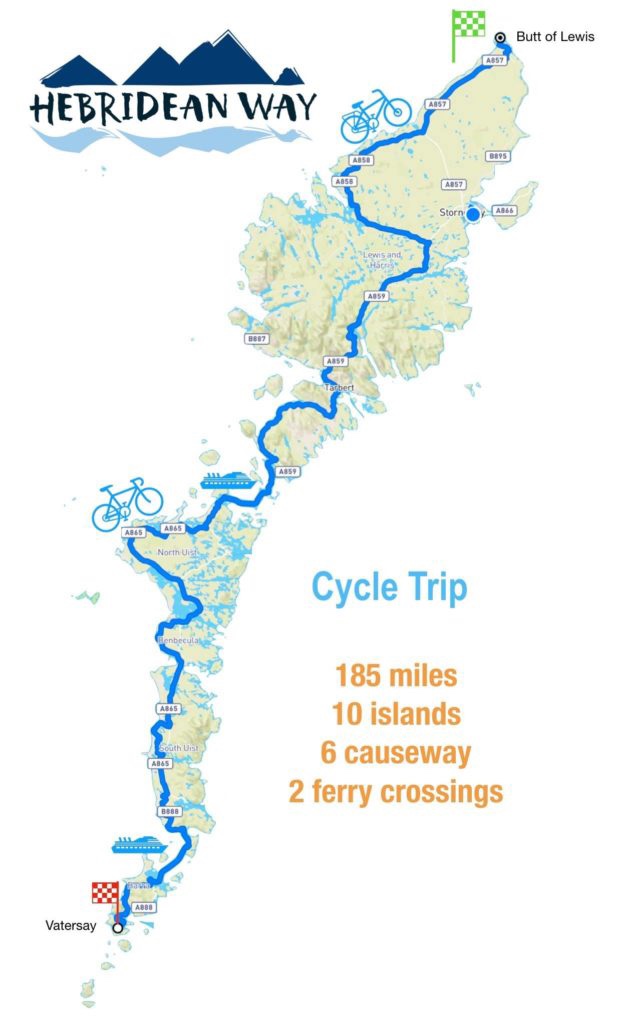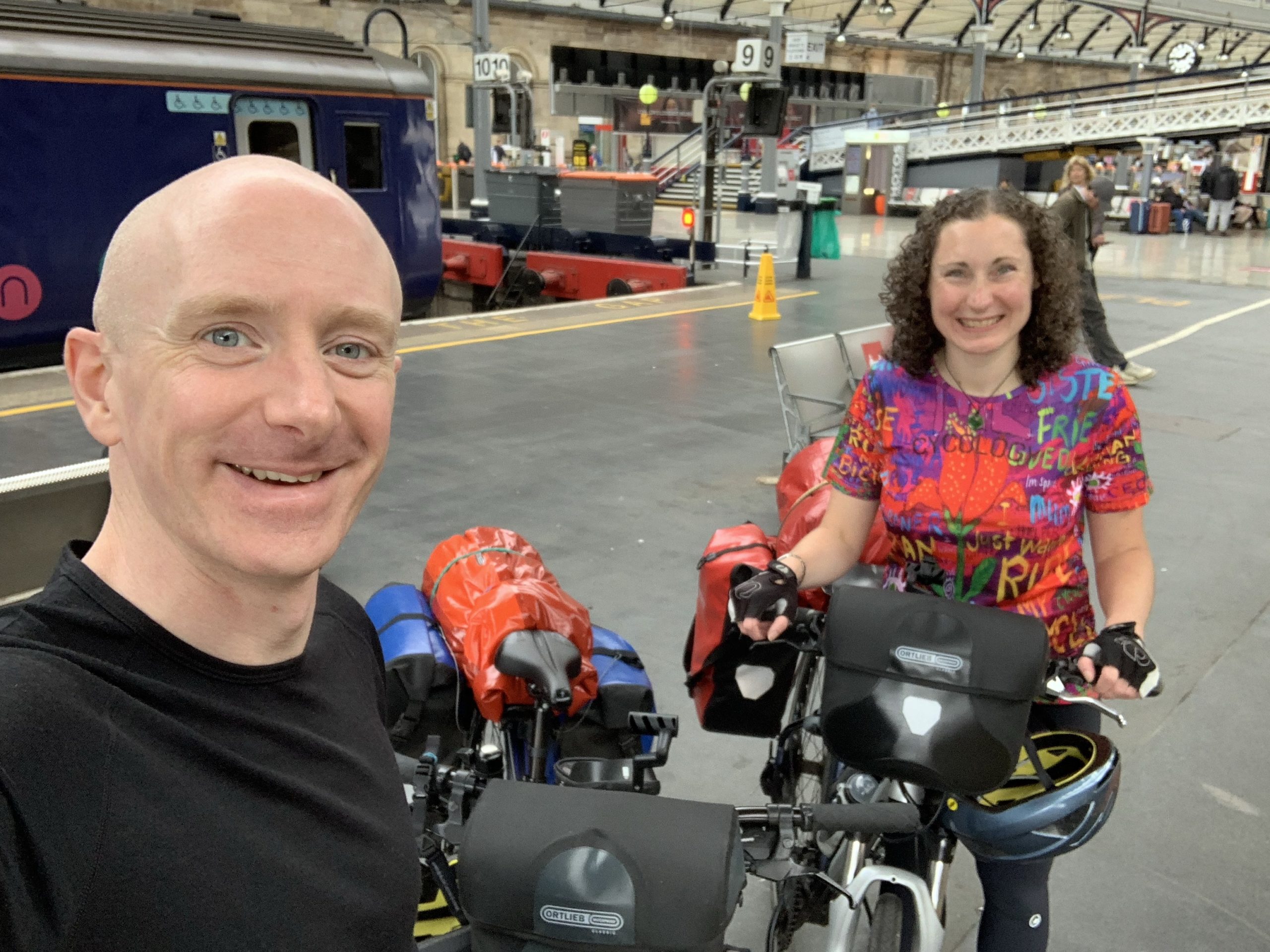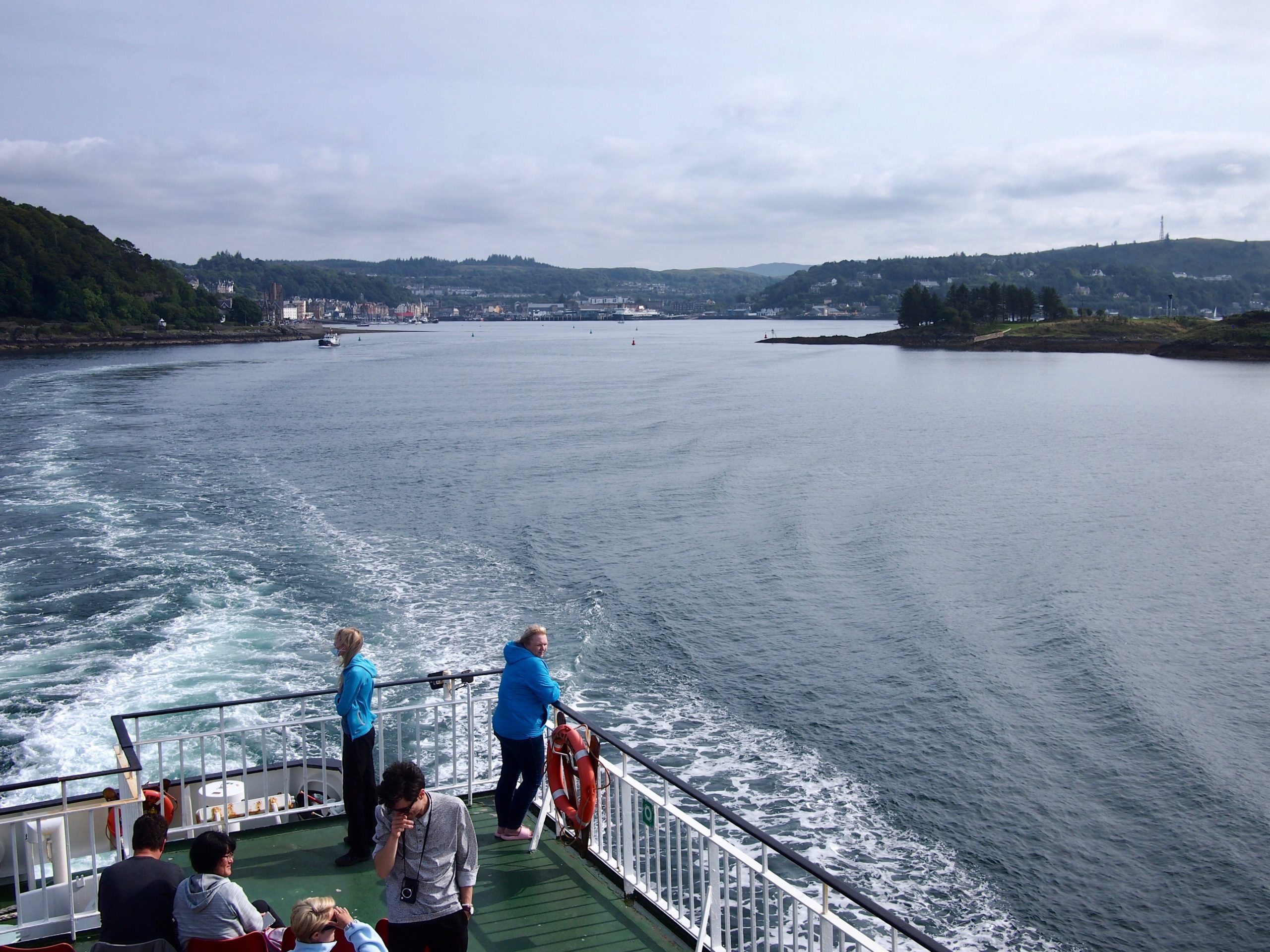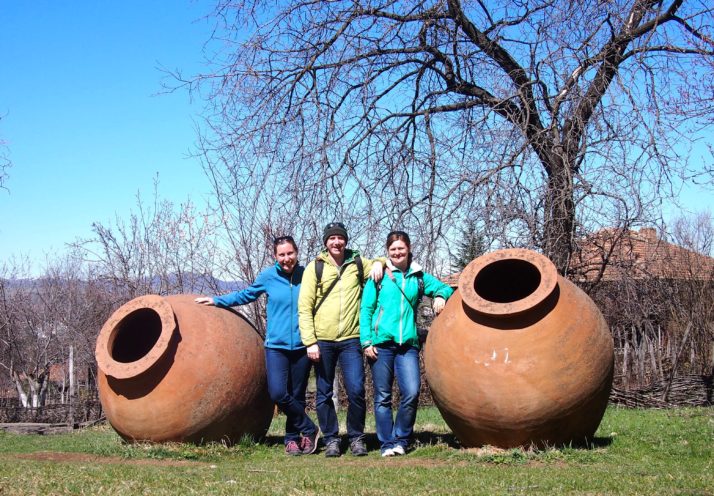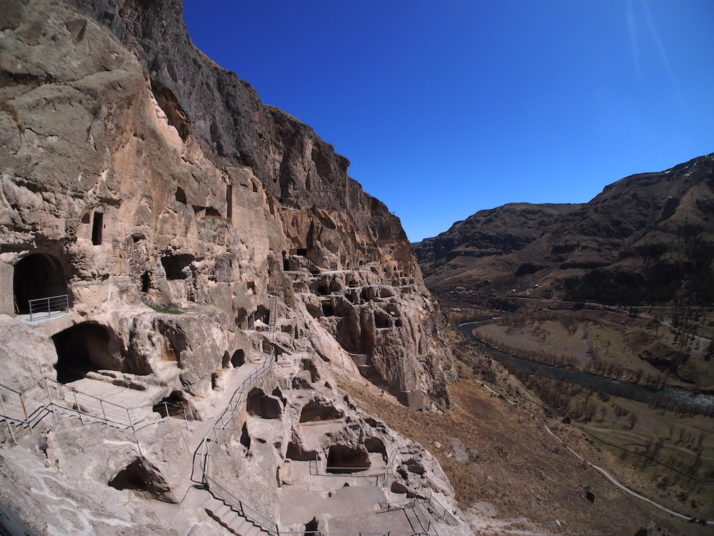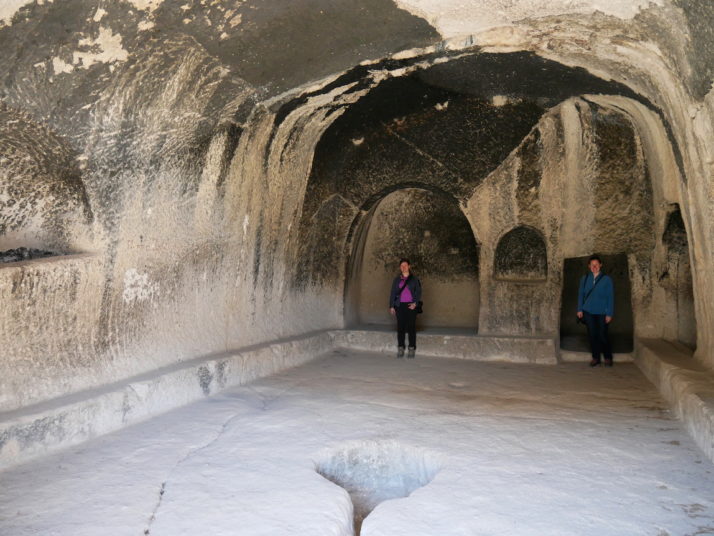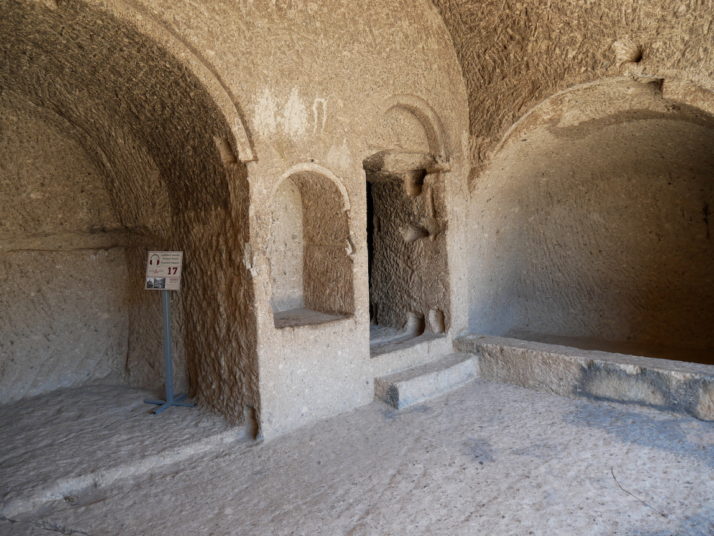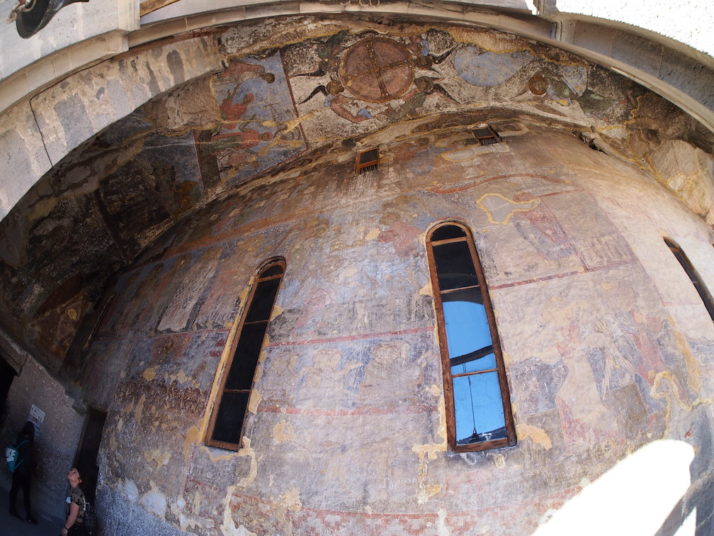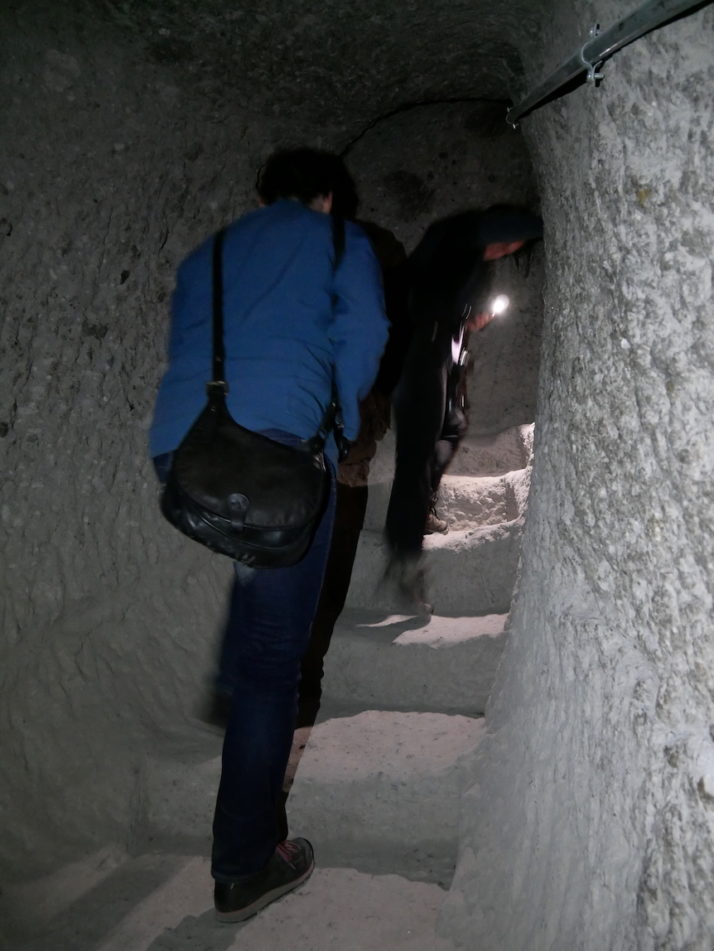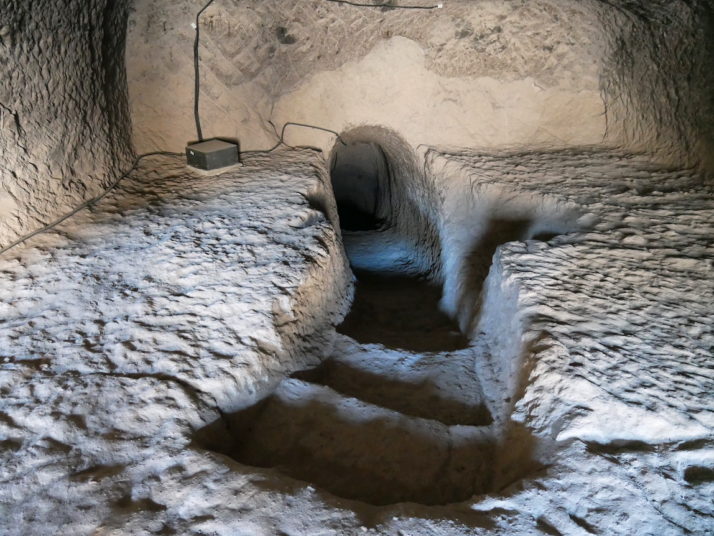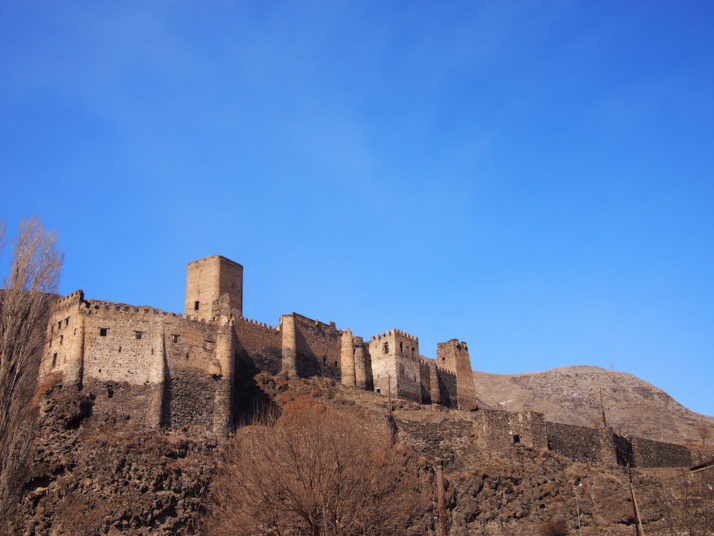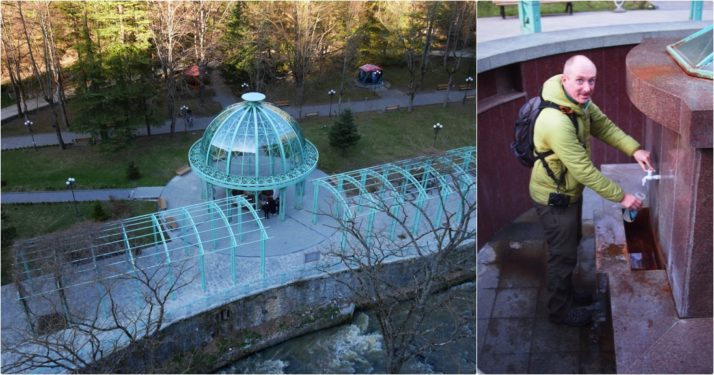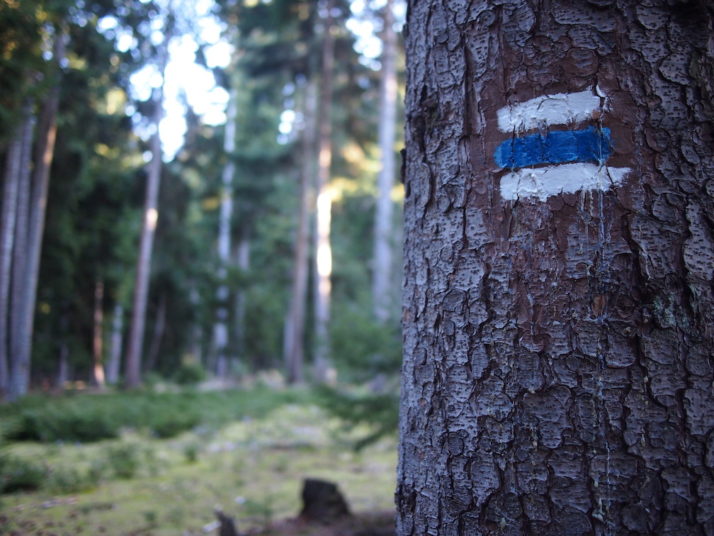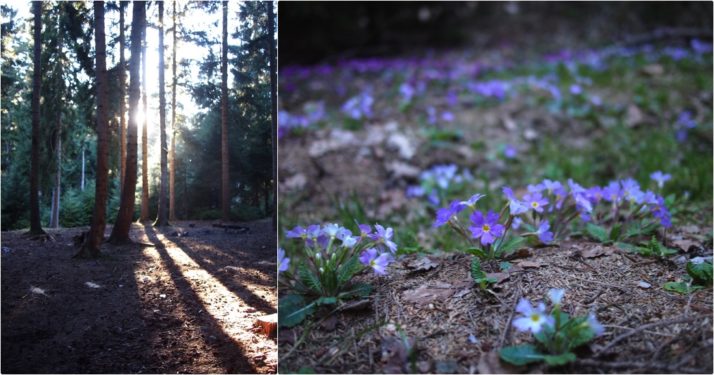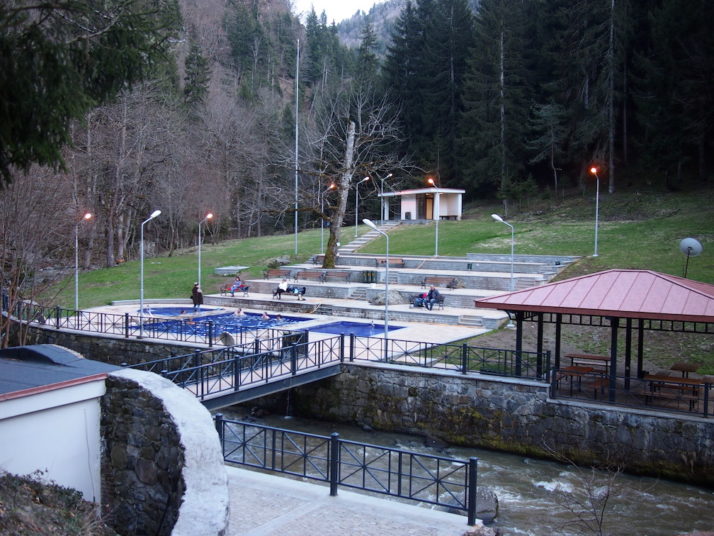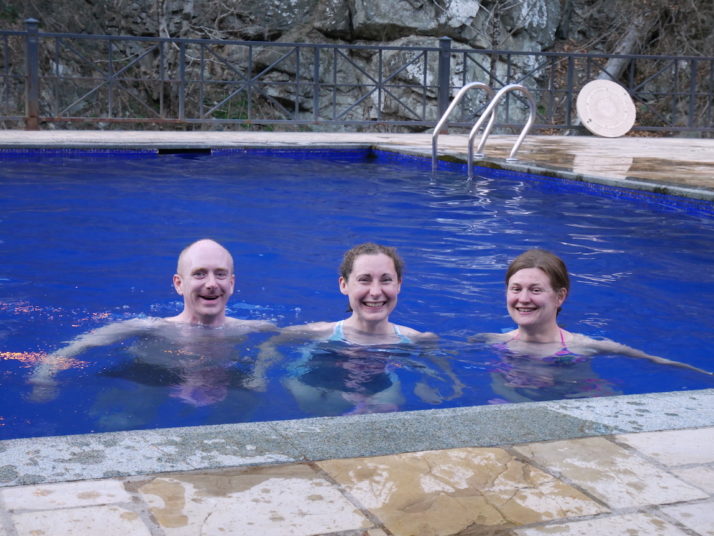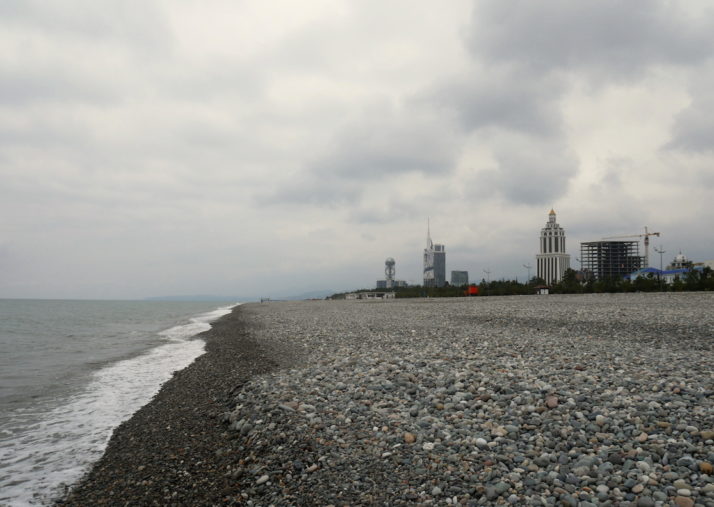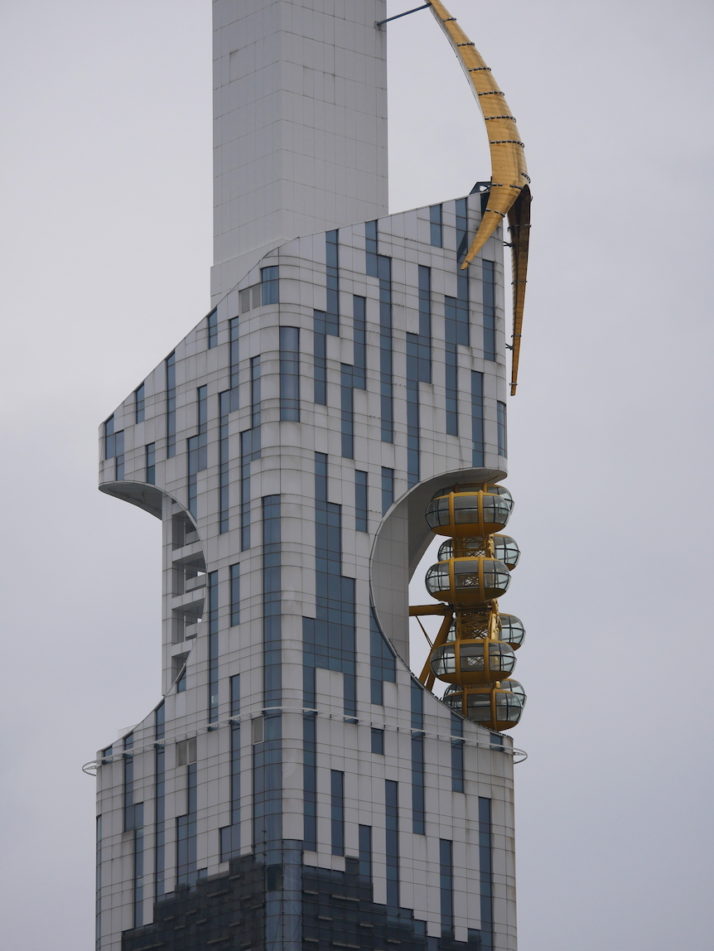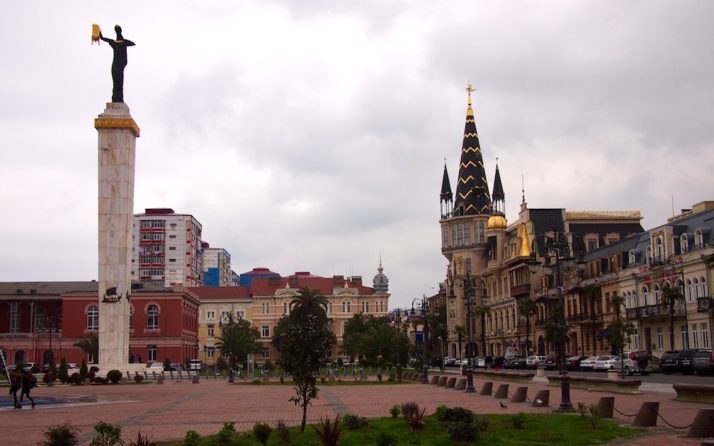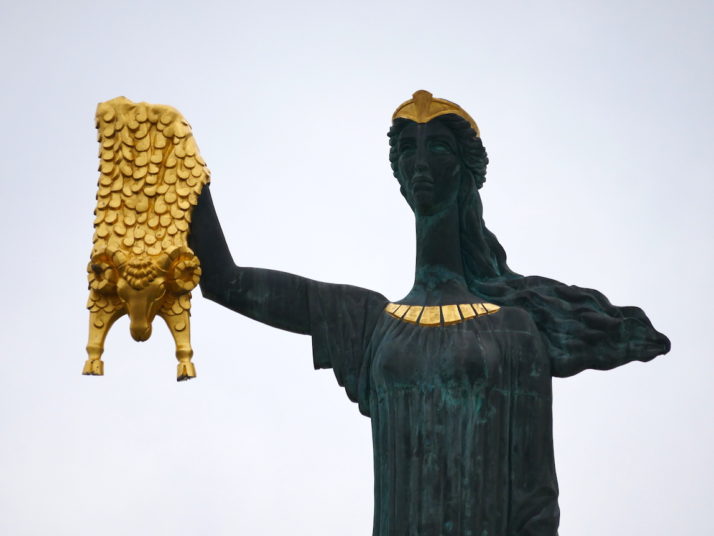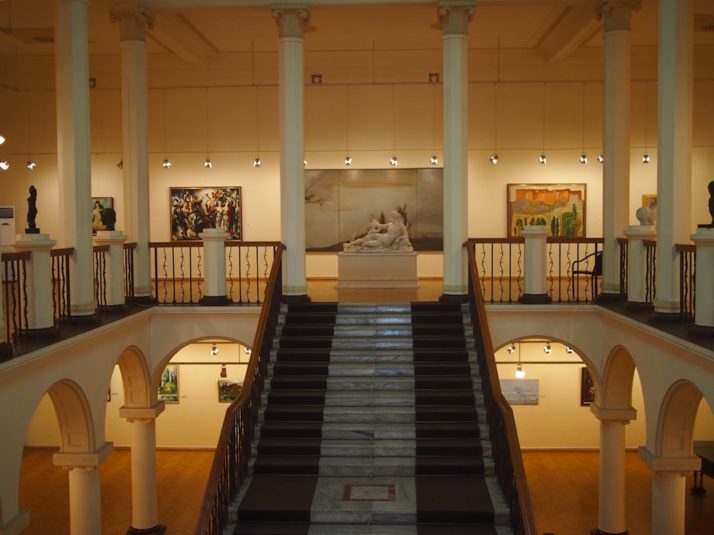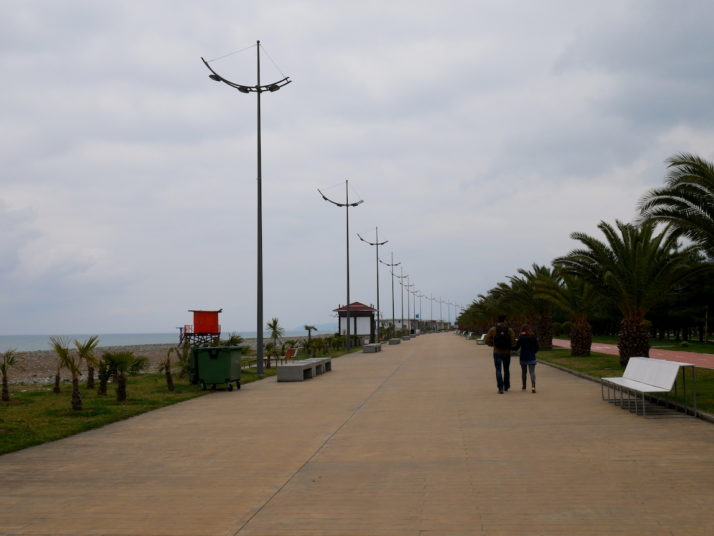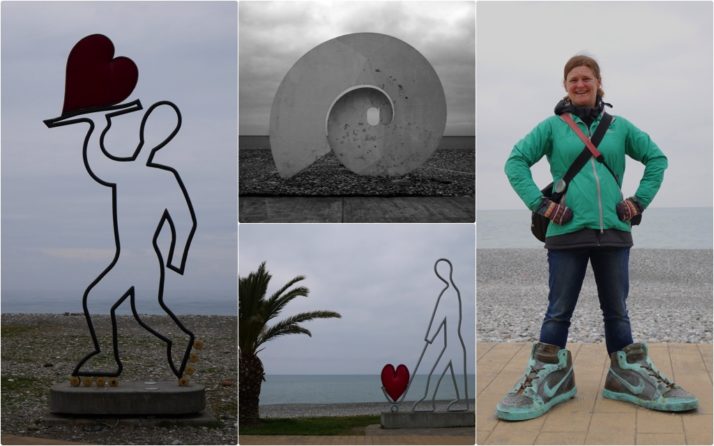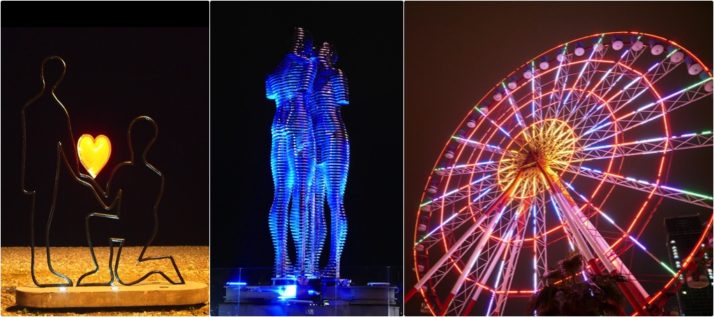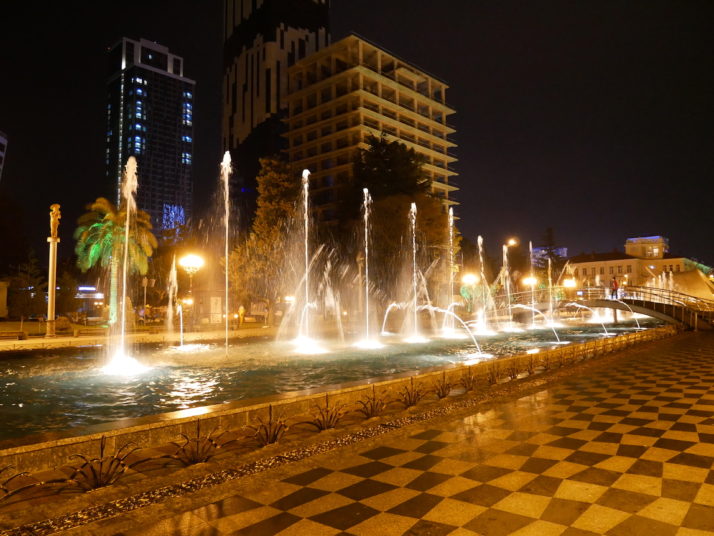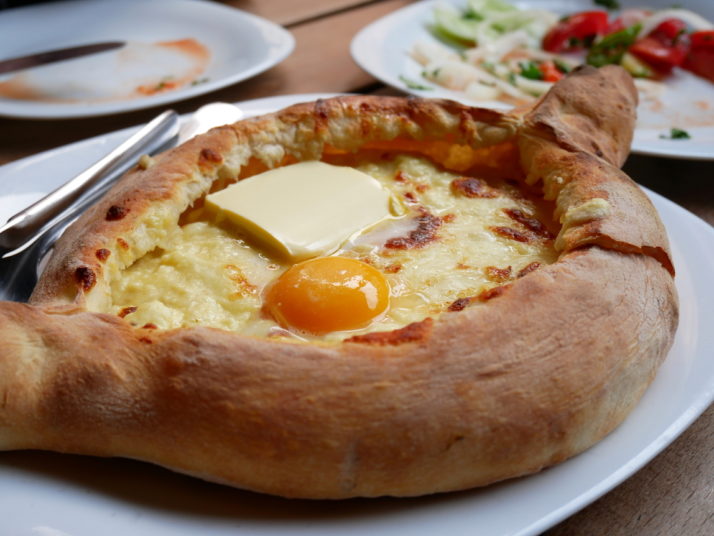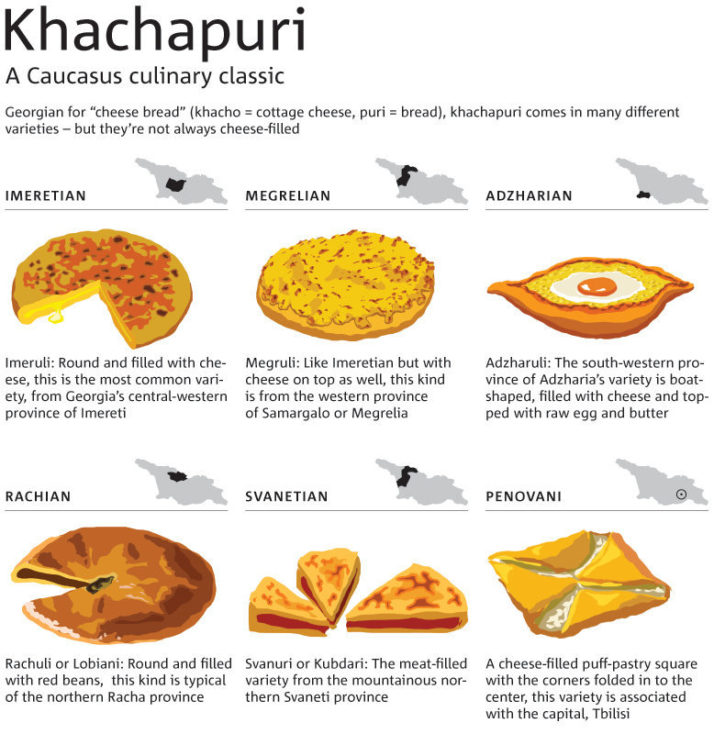| Distance cycled | 42.2 miles / 67.9 km |
| Cumulative distance cycled | 74.7 miles / 120.3 km |
| Islands visited (daily total) | South Uist, Benbecula, Grimsay |
| Total islands visited | 6 of 10 |
| Average speed | 9.4 mph / 15.1 kmph |
| Weather conditions | Partly cloudy, headwind |
Weather being much the same as the day before made for an easy and very enjoyable start to our second day and by the end of the day we’re over half-way through the islands! Julie had found an architectural trail of the Outer Hebrides and along the route on South Uist is the little ‘brutalist’ church Our Lady of Sorrows. I’m a big fan of the brutalist architectural style which explains why I enjoyed Russia so much!
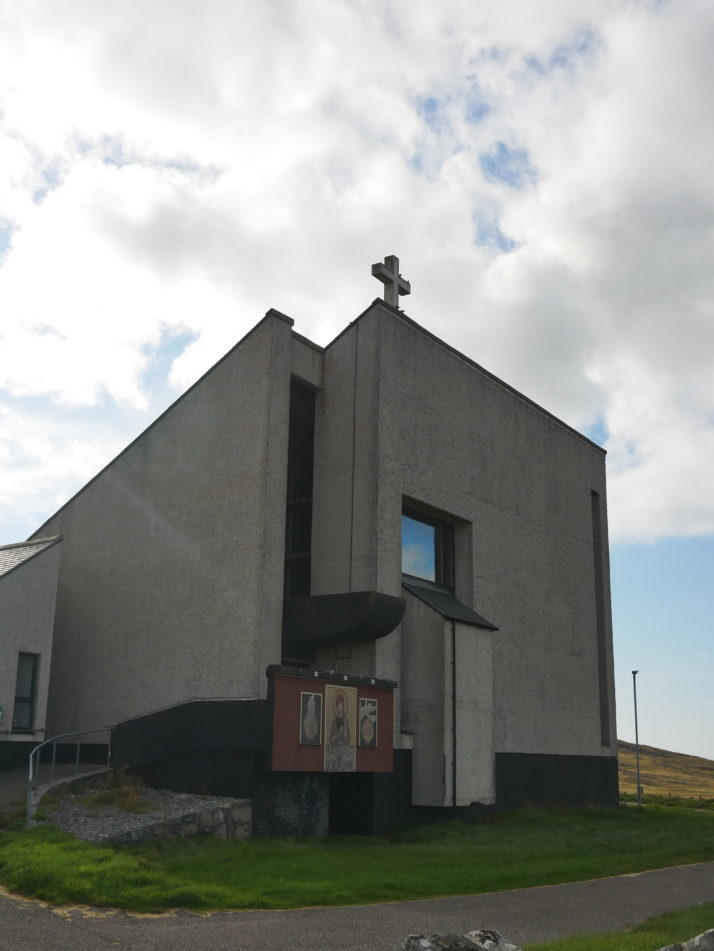
The ‘brutalist’ church Our Lady of Sorrows on South Uist, Outer Hebrides
We continued along the western coastline of South Uist and after stopping at a tiny cemetery containing Commonwealth war graves, we completely failed to find the Cladh Hallan Roundhouses, even though we’d seen a photo, found a signboard, and had some rough co-ordinates we still weren’t quite sure what we were looking for! When the route re-joined the main road we stopped at a Co-op for provisions and received a wild-camping spot recommendation from a lone cyclist enjoying his 4 days of leave from working on the ferries that service the islands.
Then disaster strikes – Julie’s pannier rack breaks after one too many cattle grids. We’ve a full toolkit so after a spot of lunch we bust out the cable-ties and patch it up as best we can until we reach the house of one of 3 bicycle repair places listed on our map – armed with only a phone-number we find out he’s only 3 miles away! When we arrive he nods approval at our bodge, but he only has front salvaged pannier racks. “Stornoway’s your only bet for a new one”, he says and adds a washer to hold it together while we make friends with his 2 sheepdogs, then he checks we have spare cable-ties (we do) and won’t take any payment whatsoever “because I can’t guarantee it’ll hold”.
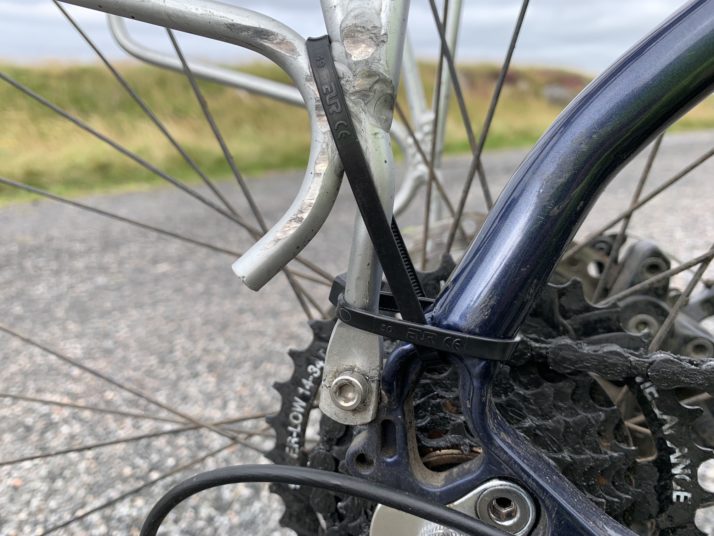
Our improvised roadside repair – fortunately the break left an ‘n’ shape sitting over the bolt so the cable-ties just had to stop it jumping out. Spoiler alert.. the addition of a washer and some careful riding makes it all the way home to Newcastle!
The final section on South Uist is on the main fast road through the centre of the island and while it wasn’t busy and we found the traffic very courteous to laden cyclists, we were pulling in often to let cars, trucks and motorhomes past. It seemed like we’d no sooner get our speed up than we would need to pull over which was a little frustrating.
It’s a short causeway to Benbecula and again the route takes us along the western coast. The afternoon sun is out and we’re feeling good so we skip the proposed campsite and its luxuries and press on to our first wild camping experience!
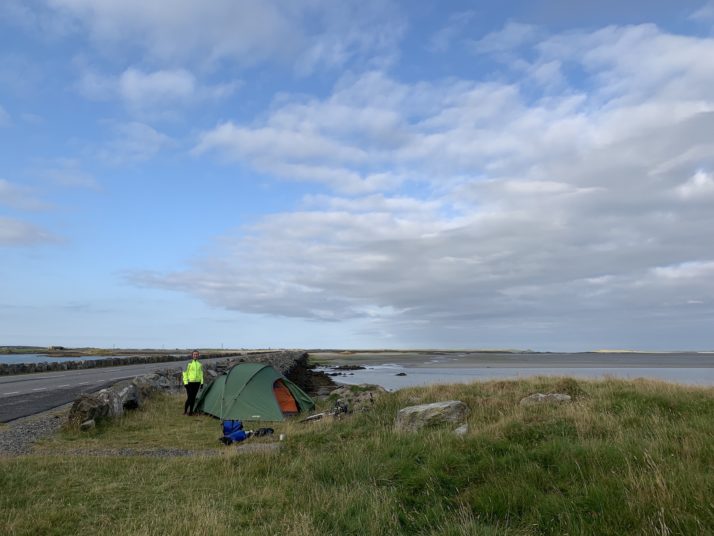
Our first wild campsite experience – the instructions were “there’s a gap in the wall along the causeway onto a little outcrop, you’ll be hidden behind the wall with lovely views and a little breeze to keep the midges down.” A delivery truck had nabbed the lay-by but we were knackered and decided to pitch up anyway!

 two year trip
two year trip